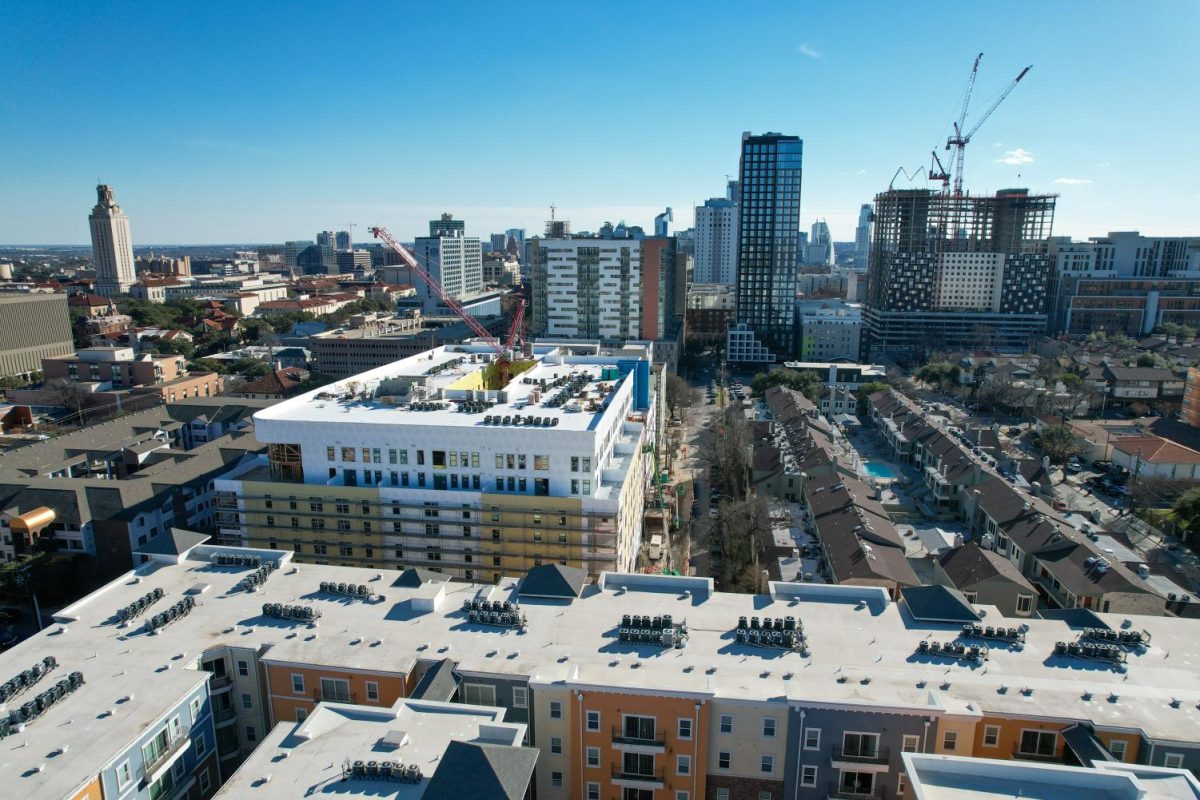When the cranes clear out, the East Mall fountain turns on and students move into the new College of Liberal Arts building in spring 2013, the end result will be $10 million cheaper and have 16,000 more usable square feet than originally planned.
By designing the building with a simple rectangular shape, in the same way architects traditionally design commercial or industrial buildings, the college’s administration and steering committee cut costs and increased square footage.
Liberal arts Dean Randy Diehl said these cost-saving measures go hand in hand with the College’s efforts to cut its budget along with the rest of the University.
“This can and really should serve as a standard for how we build on campus,” Diehl said.
Since the UT System Board of Regents approved the building, the expected cost has decreased from $100 million to slightly less than $90 million, and total usable square feet footage has increased from 120,000 to 136,000.
The original expectations and approvals by the Board of Regents were based on the traditional style for academic buildings: long and narrow with a main hallway and classrooms and offices on both sides, said Joe TenBarge, director of Liberal Arts Instructional Technology Services and an assistant dean.
At the urging of the Diehl and President William Powers Jr., TenBarge said efficiency has driven many decisions on the building, and not just on materials choices.
“We’ve made the quality choices without gold-plating things,” TenBarge said. “We’ve really saved on process and planning and design, and that’s actually harder.”
While the industrial design uses space more efficiently and allows for more efficient construction methods, natural light can’t reach a large portion of the interior space, TenBarge said. Since the beginning of the design process, the architects focused on finding ways to get light into the building’s interior, he said.
TenBarge said glass interior walls and open staircases with skylights and reflective surfaces to bounce light into the interior will address the light problem. Cutouts into the exterior walls will create indentations in the rectangular shape and bring light closer to the center of the building.
He said the collaboration between designers and construction foremen has driven the cost down even more than specific design choices.
“They are basically building the building virtually a few months ahead of the actual physical construction schedule,” TenBarge said.
The 3-D digital drawings with which architects and contractors designed and planned the building are not completely standard fare at every construction site, but are not totally new, said Bryan Lofton, project manager for SpawGlass Contractors, the company managing construction.
He said the innovative part on this project is including the people who will actually build the structure in parts of the design processes. He said this allows foremen to address problems with construction designs by changing the three dimensional drawings, rather than adjusting on-site, which costs time
and money.
He said this collaboration speeds up the process of installing systems, including plumbing and air ducting, allowing builders to see where exactly pipes intersect and plan out the most efficient process to put them in place.
“It’s still concrete and steel, and at the end of the day you put 200 men in a hole and come out with a building,” Lofton said. “It’s still cutting-edge technology, but we have to use it and get something out of it or it’s just show-and-tell.”




















